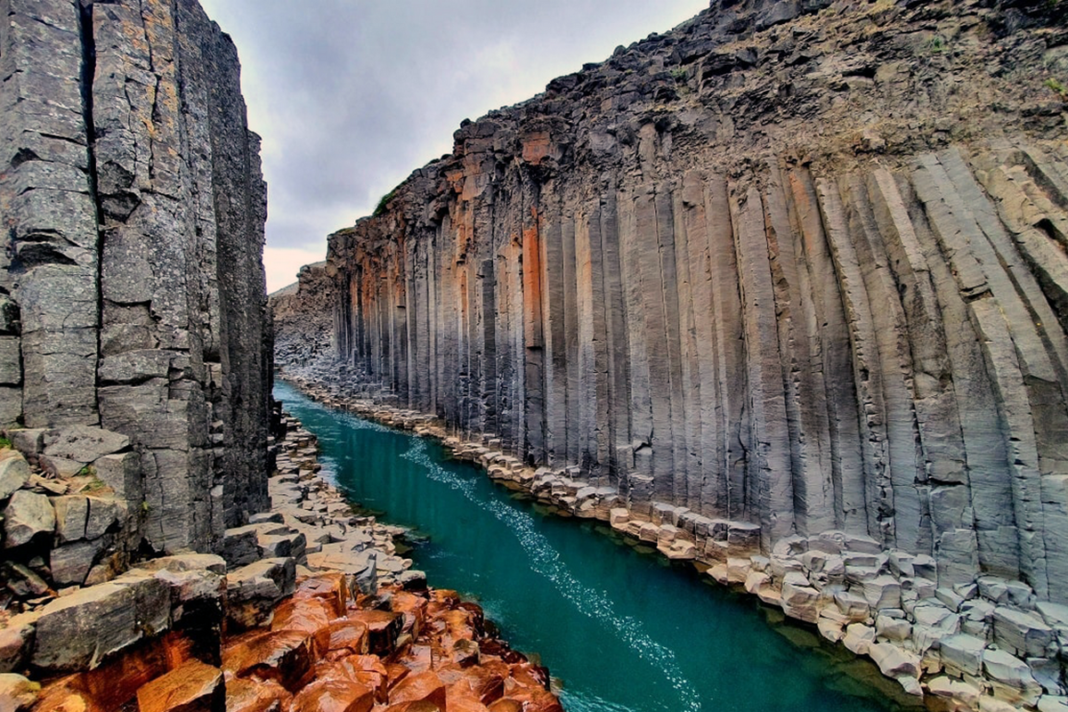Studlagil Canyon can be found in East Iceland in the Glacier Valley called Jokuldalur. With the largest number of basalt rock columns in Iceland and a stunning blue-green glacial river to contrast, Studlagil is one of Iceland’s hidden gems. The canyon is 500 m long and with 20-30 m basalt columns on both sides of the river. The color of the river differs between seasons, from blue–green during the summer to grey–brown when Karahnjukar dam is on overflow status and when the snow melts into the river.
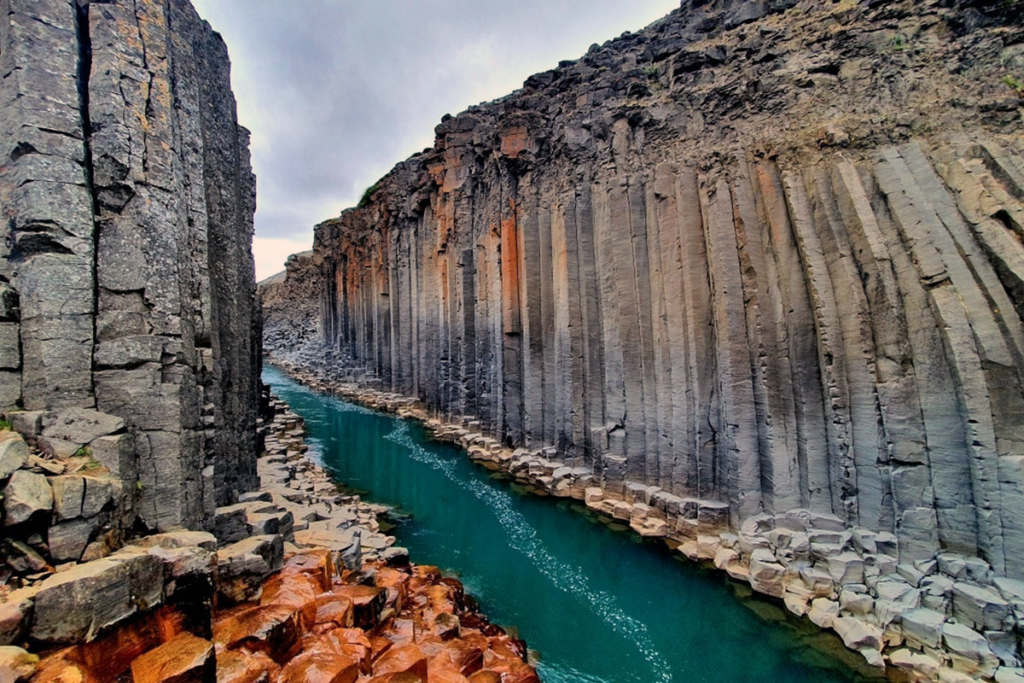
Stuðlagil Canyon was created when the force of a river so powerful forced its way from the Highlands to the North of the island. The force of this glacial river, which is 90 miles long (150 kilometers), and its water level had such great volume, that the area was considered dangerous. As a result, the area around the canyon was inhabited only by sheep for a long time.
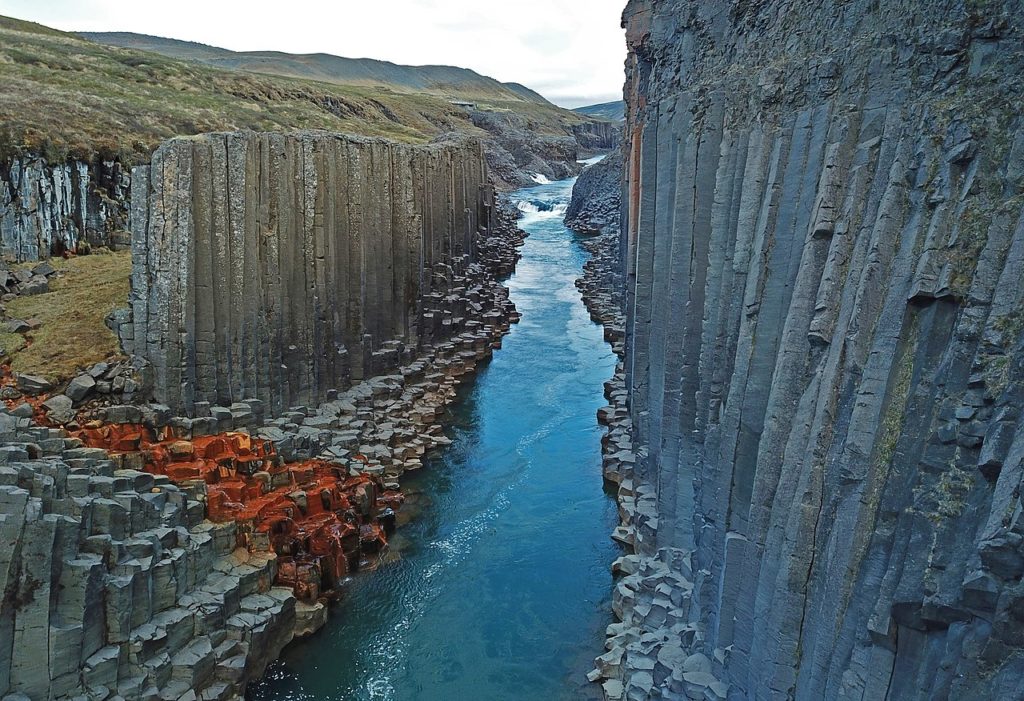
With the introduction of a nearby hydroelectric plant in 2009, Karahnjukavirkjun, the area’s landscape drastically changed. Hálslón was created in East Iceland as a vast reservoir for water.
The water level decreased, and with the hydroelectric plant harvesting the force of the water, the river became less fierce. This was part of a large-scale industrial project at the time to provide the aluminum plant in Reydarfjordur with electrical power. Now that the water has calmed and the level reduced, this natural beauty has received more attention and adoration from travelers and locals alike.
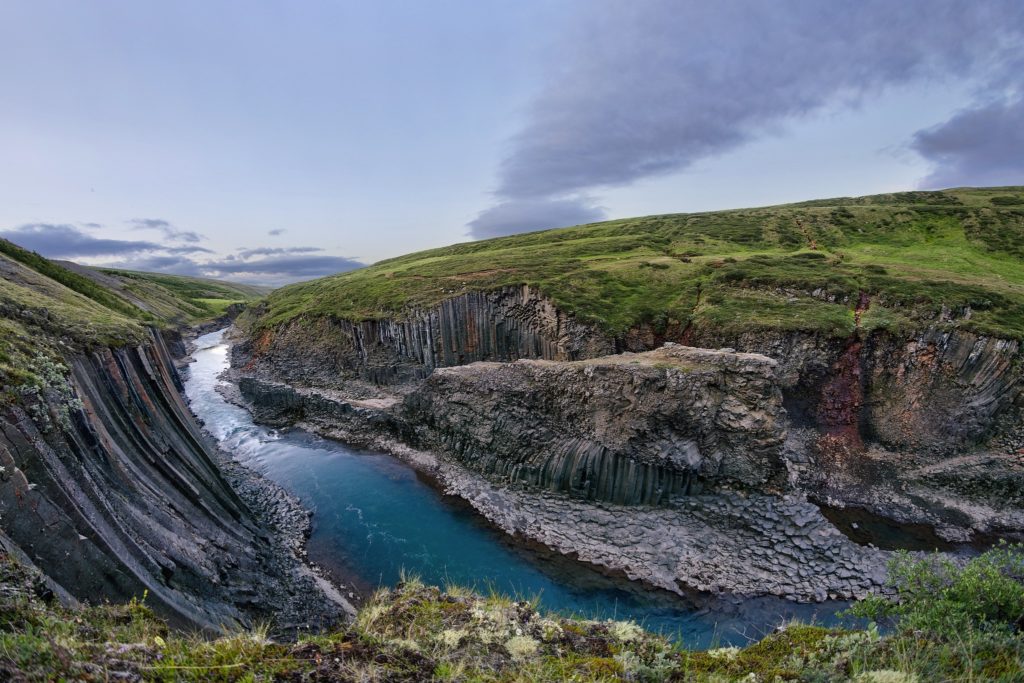
The color of the water tends to change depending on the season. From March to July, the water has a beautiful blue-green color, but as the meltwater from nearby glaciers rises to towards the end of summer, the color turns to a light grey, which is distinctive for glacial rivers.
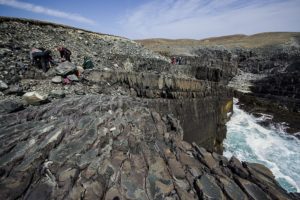
In winter, you may be able to see the northern lights from remote areas like this, and in summer, you can take advantage of the midnight sun and go there late in the evening when it’s still bright.
The terrain around the canyon is still relatively untouched, and like most of Iceland, facilities are not in place, so visitors need to be conscious of their surroundings and travel at their own risk.





